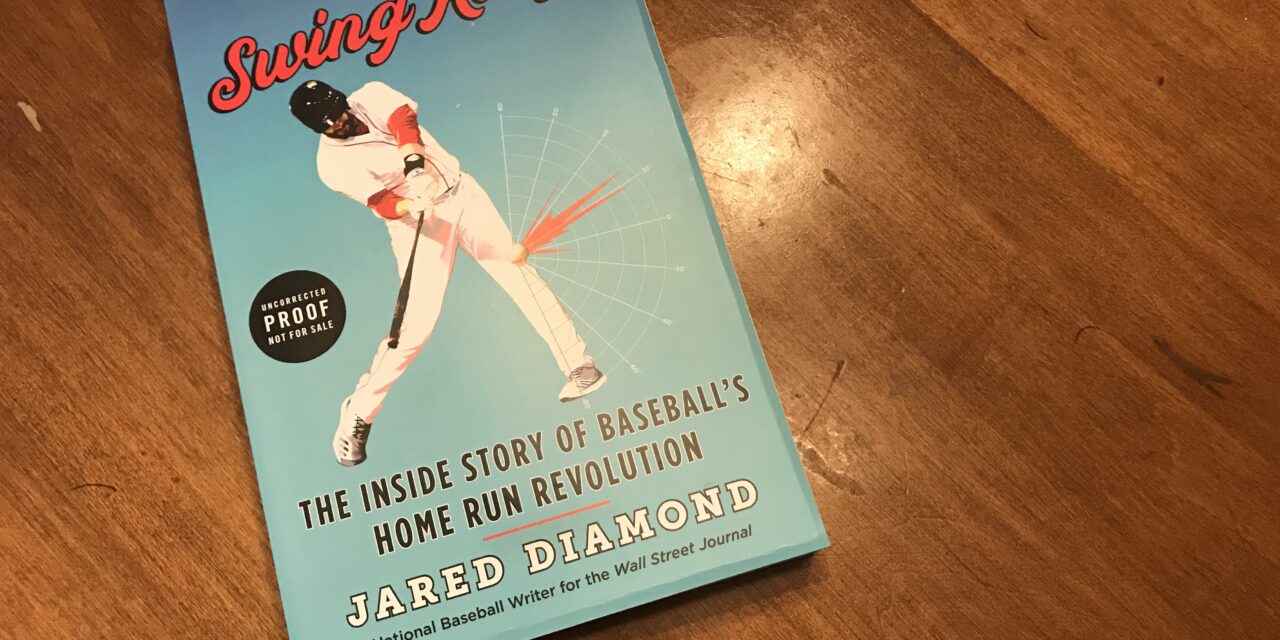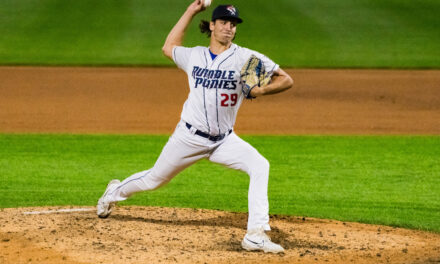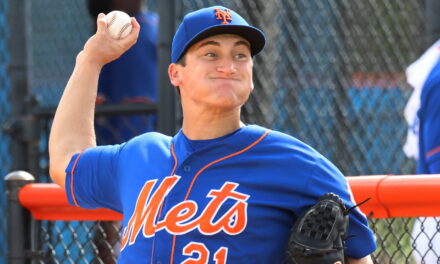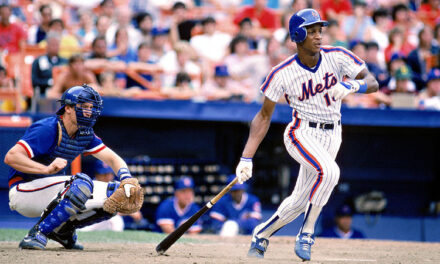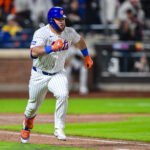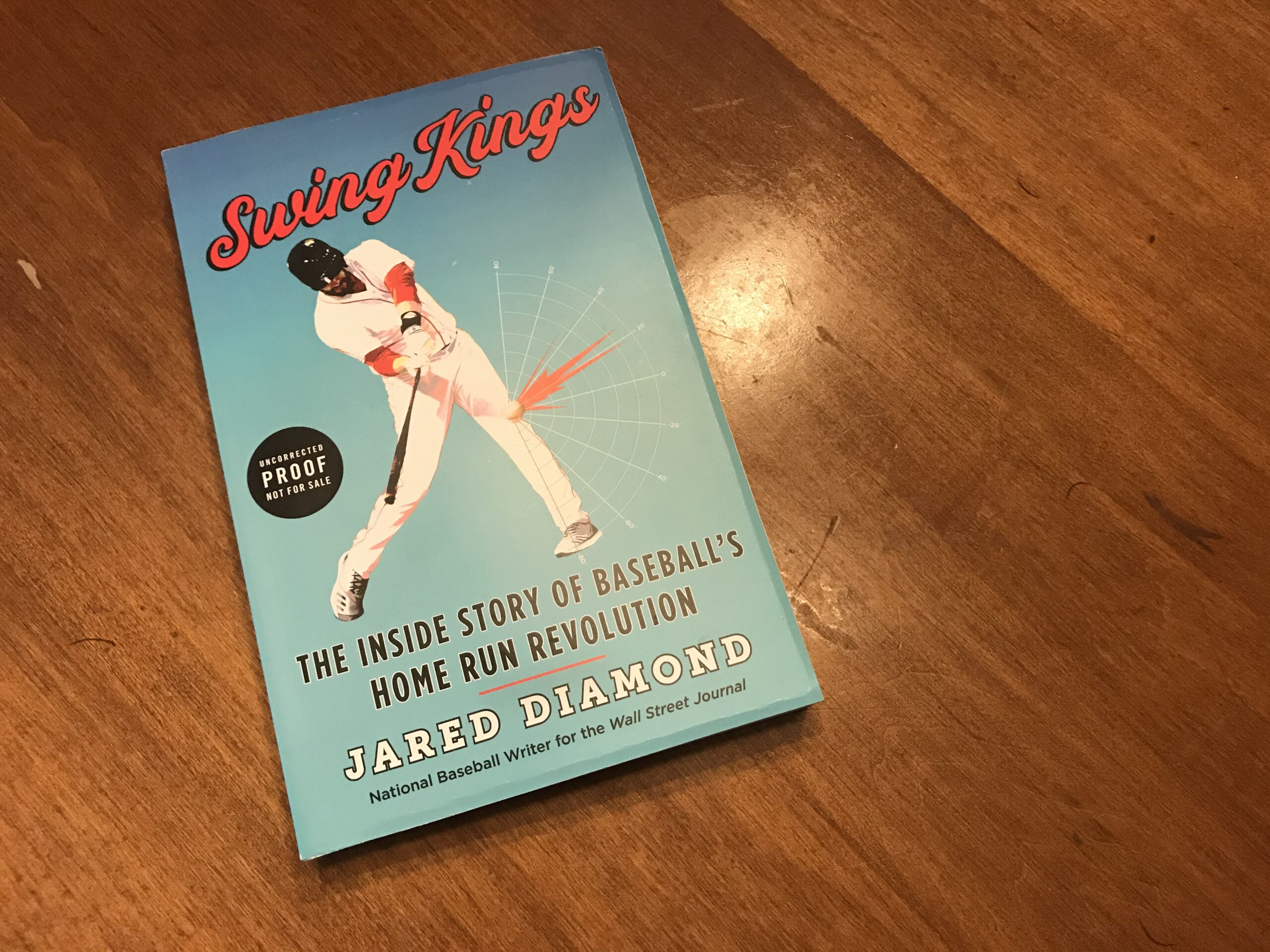
A copy of Swing Kings by Jared Diamond. [Ryan Kolakowski]
Diamond spent three years as the Mets beat reporter for the Wall Street Journal from 2013 until 2015, and Swing Kings includes several stories from those Mets teams. I spoke with Diamond about Swing Kings, the 2015 World Series-bound Mets and when we might see baseball again in 2020.
MMO – This story started as a Wall Street Journal article in 2017. What inspired you to build it into a book?
Jared Diamond – I did not understand how it was possible that great Major League players got great by working with people that didn’t work in Major League Baseball or professional baseball at all. I didn’t understand how that was possible. I assumed, the way I think many people would assume, that the best hitting coaches or the best pitching coaches or the best anything in baseball in the world worked in Major League Baseball.
If there was somebody better than those people, those would be the people working in Major League Baseball. So, that was my question, and every great story always starts with a question that you then set out to answer. For me, that question was, “How is this possible? Why are these people not working in Major League Baseball? How was it that there was this underground subculture of baseball instruction that seems to be outside of Major League Baseball?” Once I realized that that question took more than a 1,000 word Wall Street Journal article to write, that’s when I said “We’ve got to see what else we can do with this.”
It turned out that I had 95,000 words to write about the topic, and I hope that over the course of those 95,000 words I do my part in answering the question that sort of confounded me for the last three years.
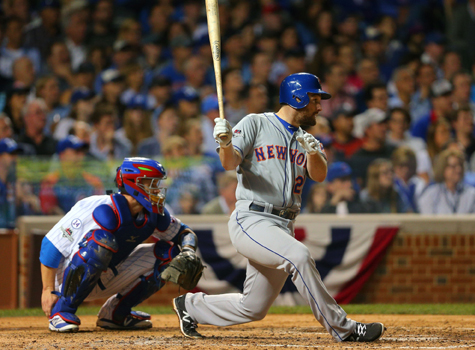
MMO – The other day you tweeted how Daniel Murphy’s 2015 postseason laid the groundwork for Swing Kings. Why start with Murphy?
Diamond – We get to the 2015 playoffs and Daniel Murphy does what he did, It was absolutely remarkable, we all remember. It was really one of the most incredible runs of baseball I’ve ever seen. It just struck me, “How was this possible?” And I realized the way it was possible was that he changed his swing. It was about technique more than anything else for Daniel Murphy in that postseason.
I had covered Daniel Murphy for three years at that point, and he was a good player, but it was very clear what he was. He was a guy that looked to hit the ball the other way. He looked to hit the ball up the middle. He looked to hit the ball on a line or on the ground. He actively didn’t look to pull the ball, and then suddenly that postseason comes and he is turning on inside pitches.
You could just see it clearly with your eyes, watching it, that he was looking to pull the ball. He was looking to put the ball in the air. It was a different mental approach than he’d ever had before, physical approach than he’s ever had before. That was incredible to me because it proved, or at least demonstrated, that a big part of hitting is technique and one can improve his performance by improving his technique.
MMO – And what was it like for you to cover that Mets team?
Diamond – It was the most fun I’ve ever had in this job, was covering the last two months of the 2015 season, because they were getting buried. We all remember, they were not going anywhere. For much of the 2015 season they were talking about 2016 and how they could get better. Suddenly, they had this run, and it was so remarkable.
To me, it all started with the Wilmer Flores non-trade. From that night on, the season was just an absolute whirlwind… It was just an unending source of drama.
MMO – Now I want to dive into the content of the book without giving away too many spoilers. How did you learn about and track down these private hitting coaches?
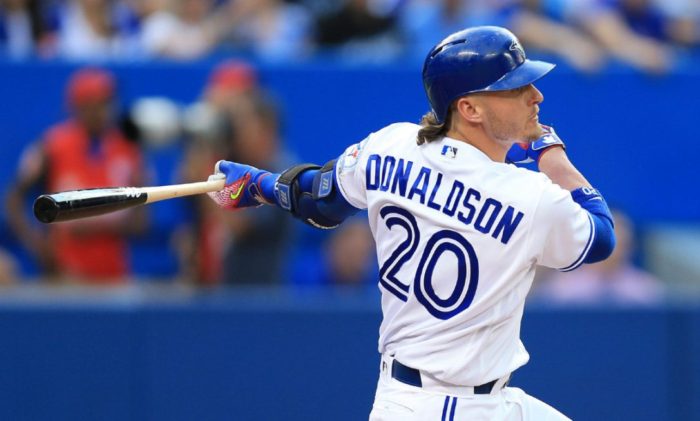
Diamond – I get a lot of inspiration just from reading local beat reporting. There are so many great local beat writers out there crushing it. Over the course of 2015, 2016 and into 2017, I kept reading about these independent hitting coaches. J.D. Martinez started talking publicly about Craig Wallenbrock. Justin Turner started talking publicly about Doug Latta, and Josh Donaldson with Bobby Tewksbary… So I had the names, and then it just became finding them.
It turned out, back then, guys were totally anonymous. They had never really been given a lot of recognition until now, so I had the opportunity to sort of embed myself with them early on and they were all, fortunately, interested in talking about their philosophies and theories about the swing.
MMO – These private instructors embraced film before Major League coaches. Why did they use it while professionals spurned those tools?
Diamond – So, Craig Wallenbrock, I consider him the godfather of everything happening with the swing. He is in his mid-70s and he has had a fascinating life. If there were a main character of this book, I would say it’s Craig Wallenbrock. He is one of the most fascinating human beings I’ve ever met in my entire life, and I hope I did his story justice.
In the book, this is a guy who quit baseball when he was about 20 years old, moved out to the beach in California and became a full-time, as he said, “pot-smoking hippie,” and full-time surfer. This was the guy who I think revolutionized hitting in ways that very few people in baseball have, and the way that he did that, like you mentioned, is by adopting film early on — starting to look at film as early as the 70s and 80s before that was in vogue.
The attitude back then was, “Good hitters don’t need film. Good hitters know what they’re doing. You’re somehow weak or it’s somehow less manly or macho to look at video of yourself. A good hitter knows what makes him a good hitter.”… It took outsiders to be the innovators that said, “Well that’s dumb. Obviously looking at video is a good idea, and if you’re not going to do it, I’m going to do it.” And what these hitting coaches found, Craig Wallenbrock perhaps being the first, was what great hitters say they do or think they do is not always what they actually do.
MMO – There’s a lot of content in your book for Mets fans. Marlon Byrd, Justin Turner and Daniel Murphy are all mentioned. How did Queens become such a significant part of the home run revolution?
Diamond – It started with Marlon Byrd, first and foremost. Marlon Byrd comes to the Mets in 2013, my first year covering the Mets, as a non-roster invitee, a non-roster minor league contract guy. He ends up making the club after having an unbelievable spring training, and I think by about the beginning of May he’s the Mets cleanup hitter. And we all know he had a great season in 2013.
That was probably the best season of his career, and he was already about 34 or 35 years old at the time, you’d have to check me. How did he do it? How does this guy do it? And for most of the season he wasn’t really talking about. He just said, “Well I made some changes to my swing.” He didn’t really get into how, and other players noticed. Guys like Turner, Murphy and many others said ‘What are you doing man? Your swing looks weird. Your swing looks different.’
‘Yeah, I made changes.’ But it was sort of, guys didn’t want to try to emulate it. It was so radical. It looked so weird.
Well, eventually, Marlon Byrd opens up. Enough time has gone by that it’s no longer dangerous to be honest about what he did, and he talks about Doug Latta. The story of how Marlon Byrd met Doug Latta is one of my favorite anecdotes in the book. I don’t want to spoil it, but it’s really fascinating how the twists of fate can happen to a person. But anyway, he makes some incredible swing changes under Doug Latta’s tutelage.
Eventually, Justin Turner, who was sort of on the fringes, we all know he was cut in the offseason between 2013 and 2014, he says, “I’ve got to get on this program. I don’t know what you’re doing or how you learned this or who taught you to do this, but clearly it worked for you and I think it can work for me.” That’s how it really started with the Mets, with Byrd and Turner making these changes. Unfortunately, when it came to the Mets, they really didn’t get the benefits from the changes that Justin Turner made because the Mets cut him in the offseason between ‘13 and ‘14.
MMO – You note in the book how Mets coaches barred Byrd from talking to teammates about his new swing. Do you think those coaches regret that now, especially after seeing Turner and Murphy succeed elsewhere?
Diamond – I think they’ve learned. I’m sure they regret it to an extent, but moreover I think they just know better now. The Mets hitting coach in 2013 was Dave Hudgens. Dave Hudgens, of course, would go on to work for the Astros, and suddenly was teaching similar things to what he was going against in 2013. So people evolve.
People change and they learn. So, do I think they regret cutting Justin Turner? Do they regret not taking Marlon Byrd’s influence a little bit more? Yeah maybe, maybe not. I don’t think it’s fair to really blame anybody.
MMO – The result of this revolution is obviously more home runs. Is there a power hitter that you like watching or covering the most?
Diamond – I love watching Christian Yelich hit. He’s obviously made changes to his swing. He’s sort of a bit coy and cagy about what he actually did, but seeing the new Christian Yelich versus the Christian Yelich that I saw torment the Mets in Miami, how much better he’s gotten, I absolutely love watching.
MMO – We should be a few days into the baseball season, but Opening Day has been postponed due to the Coronavirus pandemic. When you think we’ll see live Major League Baseball?
Diamond – It’s so sad. The day that it all really hit me was opening day. It was a really tough day for me, and I’m sure for many others. Opening Day is the best day of the year. It just is. It’s going to be a while, but I still do believe there’s going to be baseball in 2020. I don’t know when. I don’t know if it will be any sooner than June, at the earliest. Maybe even July.
But I do know that baseball views itself as part of the recovery process, and they’re going to do everything in its power to make sure there are games this year. It’s going to be so satisfying when it does happen.
Follow Jared on Twitter @jareddiamond.


